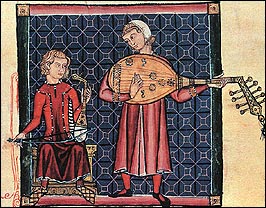
2.Genre is any category of literature, music, or other forms of art or entertainment, whether written or spoken, audio or visual, based on some set of stylistic criteria. Genres form by conventions that change over time as new genres are invented and the use of old ones is discontinued. Often, works fit into multiple genres by way of borrowing and recombining these conventions.
Genre began as an absolute classification system for ancient Greek literature. Poetry, prose, and performance each had a specific and calculated style that related to the theme of the story. Speech patterns for comedy would not be appropriate for tragedy, and even actors were restricted to their genre under the assumption that a type of person could tell one type of story best. In later periods genres proliferated and developed in response to changes in audiences and creators.

3.Fiction is the classification for any story created by the imagination, rather than based strictly on history or fact.Fiction can be expressed in a variety of formats, including writings, live performances, films, television programs, video games, and role-playing games, though the term originally and most commonly refers to the major narrative forms of literature , including the novel, novella, short story, and play. Fiction constitutes an act of creative invention, so that faithfulness to reality is not typically assumed; in other words, fiction is not expected to present only characters who are actual people or descriptions that are factually true. The context of fiction is generally open to interpretation, due to fiction's freedom from any necessary embedding in reality; however, some fictional works are claimed to be, or marketed as, historically or factually accurate, complicating the traditional distinction between fiction and non-fiction.

4.Poetry is a form of literature that uses aesthetic and rhythmic qualities of language—such as phonaesthetics, sound symbolism, and metre—to evoke meanings in addition to, or in place of, the prosaic ostensible meaning.
Epic poetry is a lengthy narrative poem, ordinarily concerning a serious subject containing details of heroic deeds and events significant to a culture or nation.These works form the basis of the epic genre in Western literature. Nearly all Western epic self-consciously presents itself as a continuation of the tradition begun by these poems. Epics also tend to highlight cultural norms and to define or call into question cultural values, particularly as they pertain to heroism.
5.Ballad is a form of verse, often a narrative set to music. Ballads derive from the medieval French chanson balladée or ballade, which were originally "dancing songs". Ballads were particularly characteristic of the popular poetry and song of the British Isles from the later medieval period until the 19th century and used extensively across Europe and later the Americas, Australia and North Africa.

Vocabulary
1.glossary/ˈglɔsəri/ noun- A list of difficult or specialized words with their definitions, often placed at the back of a book.
Example-A small glossary of some component words are appended below.
2.approach /əˈprotʃ/ verb-To come near or nearer, as in space or time.
Example-Her plan was approach the building from the back parking lot.
3.allegory/ˈælɪˌgɔri/ noun-A story, picture, or play in which this device is used
Example-The blindfolded figure with scales is an allegory of justice.
4.sonnet/ˈsɑnɪt/ noun-A 14-line verse form usually having one of several conventional rhyme schemes.
Example-There is a 13 century sonnet,which written by Du Bellay.
Poem
Shall I compare thee to a summer’s day? (Sonnet 18)
William Shakespeare, 1564 - 1616
Shall I compare thee to a summer’s day?
Thou art more lovely and more temperate.
Rough winds do shake the darling buds of May,
And summer’s lease hath all too short a date.
Sometime too hot the eye of heaven shines,
And often is his gold complexion dimmed;
And every fair from fair sometime declines,
By chance, or nature’s changing course, untrimmed;
But thy eternal summer shall not fade,
Nor lose possession of that fair thou ow’st,
Nor shall death brag thou wand’rest in his shade,
When in eternal lines to Time thou grow’st.
So long as men can breathe, or eyes can see,
So long lives this, and this gives life to thee.
